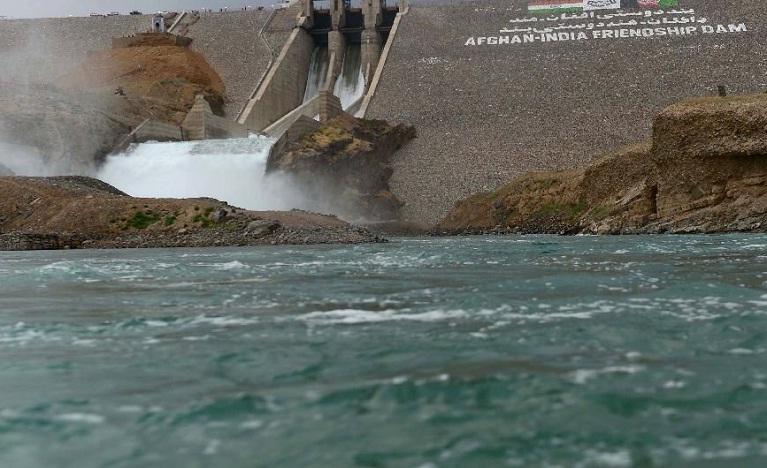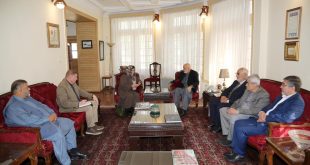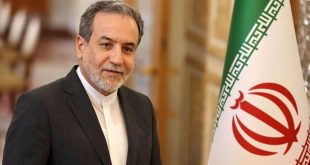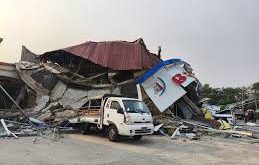Taking their “development partnership” to the next level, Indian Prime Minister Narendra Modi and Afghanistan President Ashraf Ghani inaugurated the Salma Dam during an impressive ceremony in western Herat province on 4 June. It was Modi’s second official visit to Afghanistan. In December last year, he made a pit stop in Kabul to inaugurate the new Afghan parliament building funded by India.
Salma Dam, an ambitious $300 million hydroelectric and irrigation dam located on Harirod River in Chisti district of Herat, is a flagship development project sponsored by India. The construction work on the dam first started in 1976 but it suffered heavy damages during the years of war in Afghanistan. In 1988, an Indian company took up the project but the work was halted owing to security concerns. In 2006, reaffirming its commitment to assist in the reconstruction efforts in Afghanistan, the Indian government pledged to invest $300 million on the dam. The work was originally scheduled to finish by the end of 2014. However, after missing many deadlines due to logistical constraints and security challenges, the dam was inaugurated on Saturday by President Ashraf Ghani and Prime Minister Narendra Modi in the presence of dignitaries from both the countries.
With a 20km-long and 3.7km-wide reservoir, which has a storage capacity of 640 million cubic metres, Salma Dam can irrigate 80,000 acres of farmland and generate 43 MW of electricity. The dam, according to the Ministry of Agriculture, Irrigation and Livestock (MAIL), is expected to transform the agricultural sector in Herat and give much-needed fillip to the economy in the western provinces.
The dam has been the target of many terrorist attacks in the past — at least seven in recent years. In May 2013, six security guards at the project site were killed in a roadside bomb explosion. According to security observers, the attacks, orchestrated by foreign elements, are aimed at derailing the process of development and reconstruction in Afghanistan. The people in Herat, however, have been overwhelmingly supportive of the project. In August 2015, thousands of people assembled in the Herat Stadium to celebrate the progress of work on the dam. The ceremony was appropriately named ‘Jashn-e-Noor-e-Gandom’ (celebrations of light and wheat). People performed Attan, the national dance of Afghanistan, and presented a bouquet of flowers to the Indian Consulate staff as a token of appreciation for India’s development assistance to Afghanistan.
As a tribute to the growing friendship between the two neighbouring countries, the Afghan government later decided to rechristen the dam as the Afghanistan-India Friendship Dam. The decision was taken during a meeting of the council of ministers in Kabul in August 2015.
Speaking during the inauguration of the dam on Saturday, President Ghani said the two countries have a “firm conviction and resolve that prosperity and progress of one country means that of the other”. Afghanistan, he reiterated, will not be stopped from “moving forward”, despite challenges and difficulties.
PM Modi, who was awarded Afghanistan’s highest civilian honour, in his remarks said India will speak in every forum for Afghanistan’s right to a “peaceful, prosperous, united, inclusive and democratic nation”. “Your friendship is our honour; your dreams are our duty,” PM Modi said. “India’s capacity may be limited, but our commitment is without limits.” He said India’s cooperation will extend to every part and benefit every section of the Afghan society. He went on to quote Khwaja Moinuddin Chisti, famously known as ‘Gharib Nawaz’ of Ajmer, who was born in Chisti district of Herat where the dam is located, that humans must have “the affection of the sun, the generosity of the river and the hospitality of the earth.” India, which has been an important strategic ally of Afghanistan since the fall of the Taliban in 2001, has committed $2 billion for the reconstruction efforts in the war-ravaged country. Among the big projects, India has funded the new Afghan parliament building, built an agricultural university in Kandahar and invested massively in the healthcare sector and road construction projects across the country.
In 2011, the two countries signed a strategic partnership agreement during the tenure of former president Hamid Karzai. As per the terms of the agreement, India pledged to “assist, as mutually determined, in the training, equipping and capacity-building programmes for Afghan national security forces”.
During his maiden visit to New Delhi in May last year, President Ghani said the relationship between India and Afghanistan is “not just between the two countries or governments, it is a timeless link of human hearts.” He spoke of regional integration by exploring the possibility of having breakfast in Delhi, lunch in Peshawar and dinner in Kabul. “I hope that what is immensely possible can become actually achievable,” he said.
Meanwhile, Pakistan would be none too pleased with the growing proximity between New Delhi and Kabul and India’s growing influence in Afghanistan. Observers believe both the countries see Afghanistan as a battleground for a proxy war. But, India seems to be winning hearts in Afghanistan while Pakistan has got the script awfully wrong.
The writer is a Kashmiri journalist based in Kabul. He can be reached at [email protected]
 Afghanistan Times
Afghanistan Times




